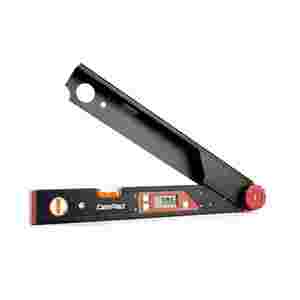Mar 20,2023

Digital calipers have revolutionized the world of measurement. Compared to conventional callipers, these tools are more precise, quicker, and simpler to use. We will examine digital callipers in more detail and go over all the information you want in this post.
A digital caliper is a precision measuring tool that uses electronic circuits to provide a digital readout of the measurement. It consists of two jaws, one of which is fixed, and the other moves along a slide. The jaws may be used to gauge an object's depth as well as its inner and outer dimensions.
Professionals and DIY enthusiasts alike favour digital callipers because of their accuracy, speed, and use. Some of the key benefits of digital calipers include:
Digital calipers can provide measurements down to the nearest 0.01mm, making them ideal for measuring small objects or precise dimensions.
With digital readouts, you can get accurate measurements within seconds, saving you time and effort.
Digital calipers are intuitive and easy to use, even for beginners. Also, they are less prone to wear and tear since they contain fewer moving components than conventional callipers.
Digital calipers can perform multiple functions, including measuring inside and outside dimensions, depths, and step measurements.
Affordable: Digital callipers may cost more than traditional callipers, but they are still quite reasonable and offer great value.
There are two main types of digital calipers: absolute and relative. Absolute calipers measure the distance between the jaws and a fixed reference point, providing the actual distance from the point of origin. Relative calipers, on the other hand, measure the change in distance from a starting point, making them ideal for measuring the thickness of materials.
• Turn on the caliper and set the unit of measurement (e.g. millimeters or inches).
• Place the object to be measured between the jaws and tighten them gently.
• Read the measurement on the digital display.
• If necessary, you can zero the display to measure the difference between two points.
• Keep the caliper clean and free of debris.
• Use gentle pressure when closing the jaws to avoid damaging the object being measured.
• Store the caliper in a protective case when not in use.
• Check the battery regularly and replace it if necessary.
• Calibrate the caliper periodically to ensure accuracy.
• Applications of Digital Calipers
Engineering and manufacturing are two areas where digital callipers are extensively utilised to measure the dimensions and tolerances of mechanical components.
Digital calipers are used in the automotive industry to measure the thickness of brake pads and rotors.
Digital calipers are used in woodworking to measure the thickness of lumber, as well as to ensure precise cuts and joints.
Digital calipers are used in jewelry making to measure gemstones, metals, and other materials.